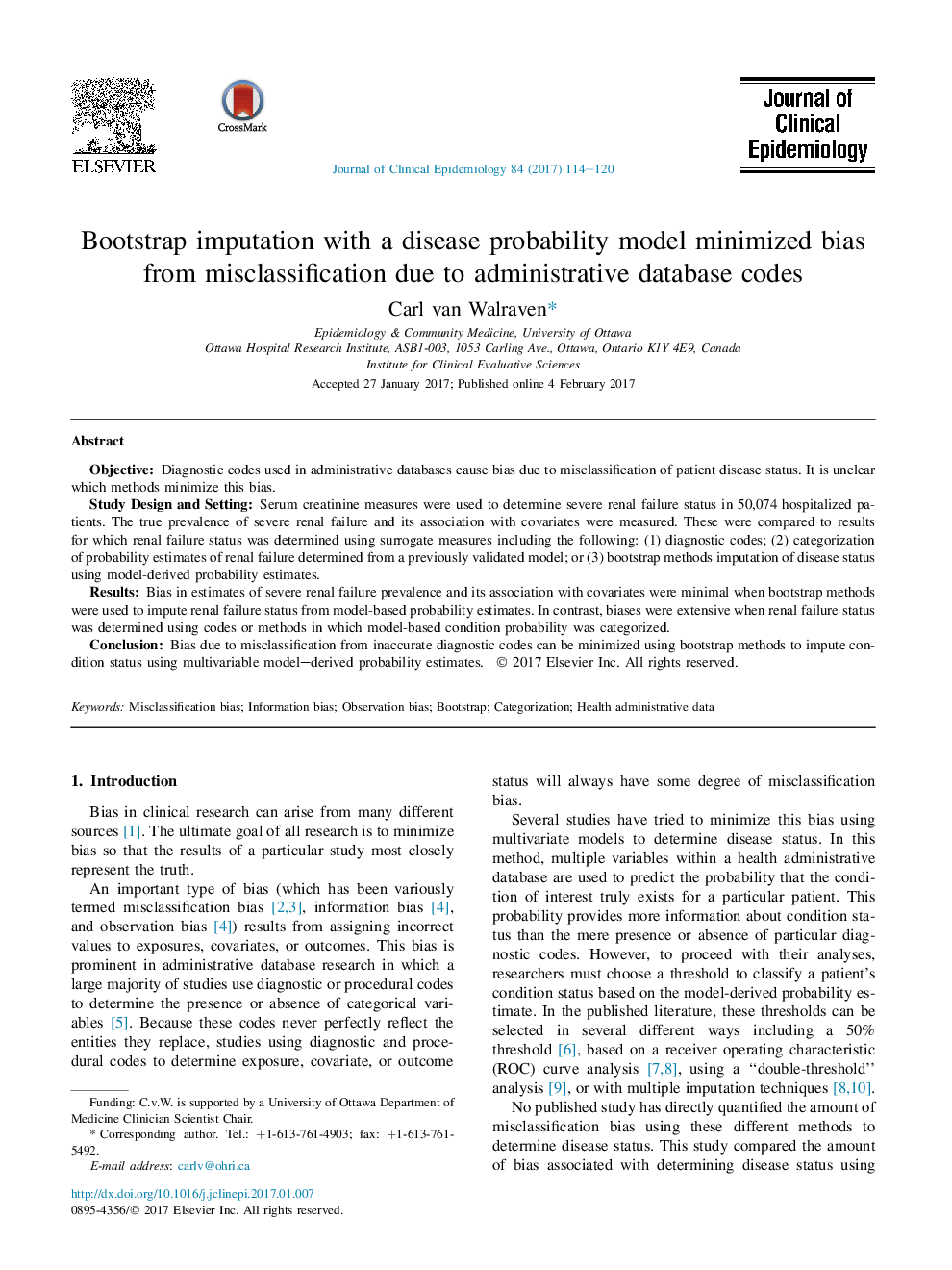| Article ID | Journal | Published Year | Pages | File Type |
|---|---|---|---|---|
| 5121732 | Journal of Clinical Epidemiology | 2017 | 7 Pages |
â¢Diagnostic codes used in administrative databases cause bias due to misclassification, but the analytical methods which minimize this bias are unclear.â¢The prevalence of true severe renal failure in different patient cohorts and its association with other covariates was determined. Bias in these measures was minimized when disease status was imputed using bootstrap analytical techniques applied to disease probability estimates from a multivariate model.â¢If an accurate model is available to estimate condition probability, researchers should consider using bootstrap methods to minimize misclassification bias in prevalence estimates and association measures.
ObjectiveDiagnostic codes used in administrative databases cause bias due to misclassification of patient disease status. It is unclear which methods minimize this bias.Study Design and SettingSerum creatinine measures were used to determine severe renal failure status in 50,074 hospitalized patients. The true prevalence of severe renal failure and its association with covariates were measured. These were compared to results for which renal failure status was determined using surrogate measures including the following: (1) diagnostic codes; (2) categorization of probability estimates of renal failure determined from a previously validated model; or (3) bootstrap methods imputation of disease status using model-derived probability estimates.ResultsBias in estimates of severe renal failure prevalence and its association with covariates were minimal when bootstrap methods were used to impute renal failure status from model-based probability estimates. In contrast, biases were extensive when renal failure status was determined using codes or methods in which model-based condition probability was categorized.ConclusionBias due to misclassification from inaccurate diagnostic codes can be minimized using bootstrap methods to impute condition status using multivariable model-derived probability estimates.
